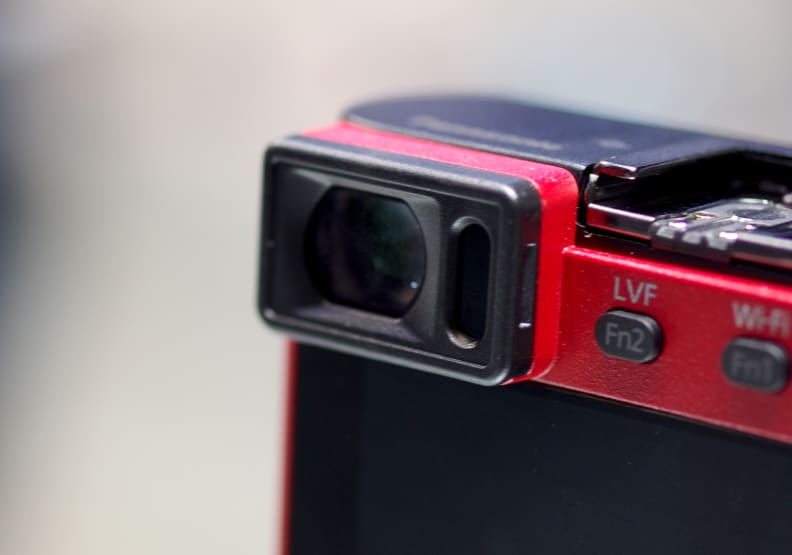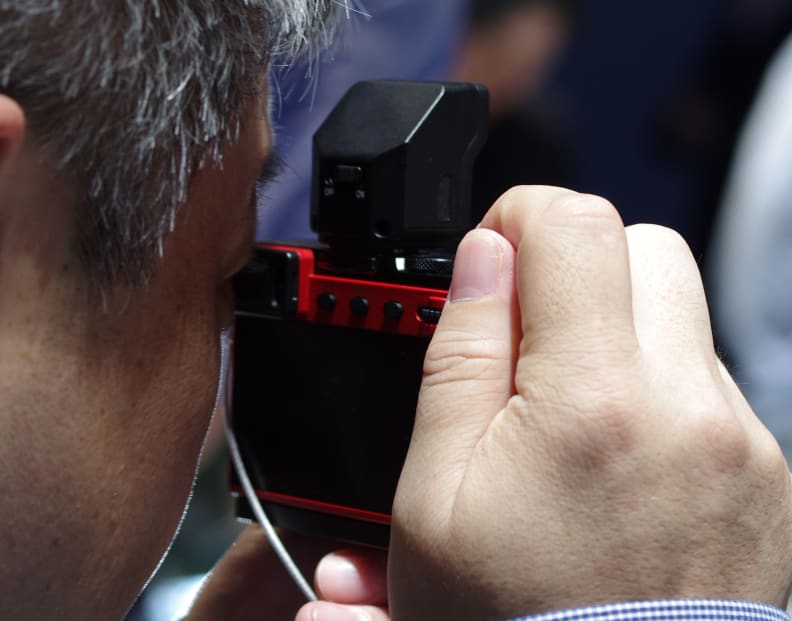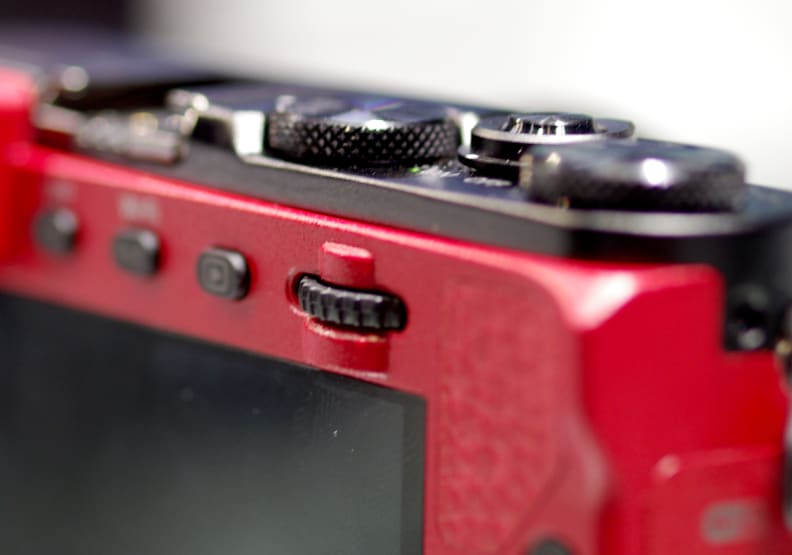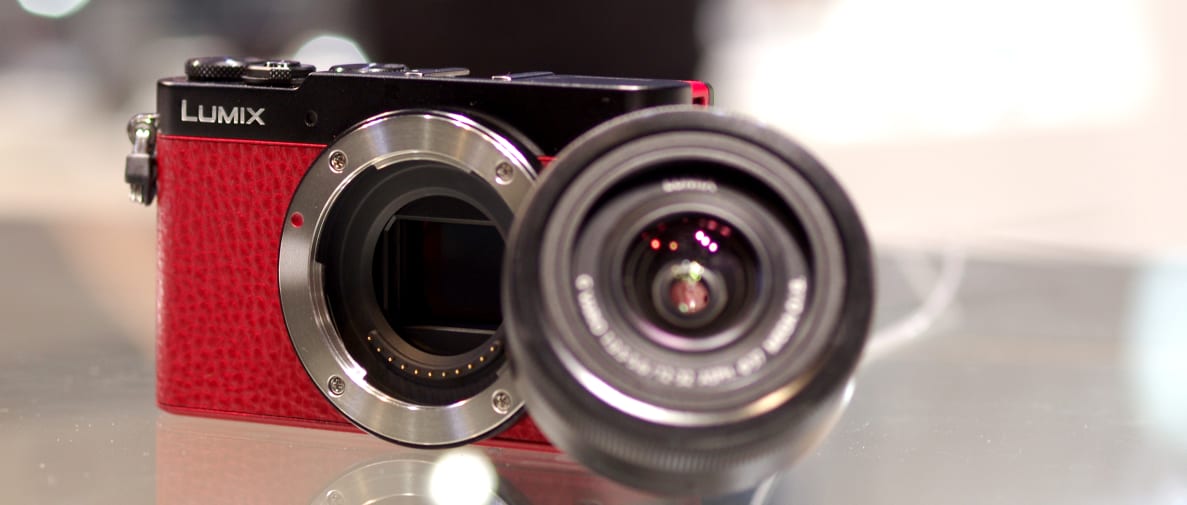Pros
Cons
At first glance, the new Lumix GM5 (MSRP $899.99 w/ 12–32mm lens) doesn't appear all that different from the GM1 that we reviewed last year. It's a pocketable camera with a Micro Four Thirds sensor and a decent processor. Take a closer look at the back, however, and you'll spot the GM5's ace in the hole: a new electronic viewfinder.
The GM5 improves in some other key ways on the GM1, but the viewfinder is the star of the show. It isn't the best EVF on the market, but it's a marked improvement over having no finder at all, letting you put that Micro Four Thirds sensor to good use no matter what lighting condition you find yourself in.
{{brightcove '3789456229001'}}
Design & Usability
With an EVF, the GM5 is as flexible as it is compact.
If you've never used a GM1 before, the GM5 will be something of a surprise. Calling it "svelte" simply doesn't do the GM5 justice, and it's even smaller than it appears in photos online. It's about the same width and height as a business card, and the body is small enough that you can easily carry it with you almost anywhere. If you have used the GM1, then the GM5 is basically more of the same, plus a viewfinder.
The body itself is mostly just a (tiny) flat brick wrapped in a textured material. On top you'll find a hot shoe, a mode dial, a dial for changing focus modes, and the shutter button/zoom toggle. On the back there's a single, small control dial, a four-way directional pad, and customizable buttons that double as WiFi/EVF toggles. Even without a grip, the GM5 is easy to hang onto and shoot with due to its light weight—though the added screw-on metal grip is a must if you want to use larger MFT lenses.

The GM5's EVF sets it apart from its predecessor, letting you shoot in any lighting condition.
Despite its small size, the GM5 does come with plenty of manual controls and settings, but the single control dial for settings adjustments isn't the best. With a few button presses, the dial can go from controlling shutter speed to aperture to basically whatever you need, but an extra dial instead of the static four-way pad would've been nice. The dial itself is a little loose, and—as you'd expect—it's quite small.

With the external flash and grip attachment on, the GM5 actually becomes quite a bit chunkier.
Of course, the real story here is the GM5's new 1.2m-dot EVF. Though you'll mostly frame using the 912k-dot rear LCD, the EVF is always there when you need it. It's not the best we've used (it's small, has a long eyepoint, and the refresh rate isn't great), but it's better than nothing. It's ever so slightly worse than using the pop-up finder on the Sony RX100 III, but it's an excellent addition and doesn't add much bulk compared to the GM1.
{{photo_gallery "DESIGN"}}
Features
A surprisingly robust feature set for a surprisingly tiny camera.
While the GM5's physical controls are rather spartan, the camera's feature set is about on par with any other Micro Four Thirds camera in Panasonic's stable. For still shooters it's got a a 16-megapixel M43 sensor that maxes out at ISO 25,600, dwarfing what other cameras this size are typically capable of.

The GM5 is wrapped in this faux-leather texture, giving you just enough grip to keep hold of the body.
The GM5 can also capture 1080/60p video, shoot stills at shutter speeds of up to 1/16,000th of a second, and track subjects at 240Hz. The GM5 also includes all the standard Panasonic creative modes, with other exposure modes like timelapse, stop motion animation, and Panasonic's "Clear Retouch" mode adding to the mix. There's also built-in WiFi, which is a nice addition for a camera that you're bound to have with you while out and about.

There's just the lone control dial on the GM5, letting you make manual adjustments to certain settings.
For advanced shooters, there's still plenty to like here, including full manual control, focus peaking, silent shooting, RAW shooting, and continuous shooting of up to 5 frames per second with autofocus (5.8fps without). It may look like a point-and-shoot, but the GM5 is as full featured as any other entry-level mirrorless camera.
Conclusion
The GM5 has some big (tiny) shoes to fill.
The Panasonic GM5 certainly isn't the most powerful camera to be announced here at Photokina 2014, but it's one of the most interesting updates we've seen this year. We were pretty well convinced that Panasonic wouldn't be able to make any drastic changes to the GM1; the darn thing is so tiny already—what else could you fit in there?

The GM5 is the smallest Micro Four Thirds camera in Panasonic's lineup.
The GM5 does lose the built-in flash from the GM1, but you can always attach an external one to the hot shoe. And even the most cynical strobist would concede that gaining an EVF is a worthwhile tradeoff. Though we've only been able to check out the GM5 under the hot lights of the Koln Messe, we have to imagine there will be times when sunlight makes framing with the rear LCD impossible. When those times come up, the GM5's EVF will let you get the shot.
We'll have to check out the GM5 in our test labs before we can make any concrete proclamations about quality, but so far it's looking like a camera that gains a significant advantage over the GM1 without losing what made that camera special.
Meet the tester
TJ is the former Director of Content Development at Reviewed. He is a Massachusetts native and has covered electronics, cameras, TVs, smartphones, parenting, and more for Reviewed. He is from the self-styled "Cranberry Capitol of the World," which is, in fact, a real thing.
Checking our work.
Our team is here to help you buy the best stuff and love what you own. Our writers, editors, and experts obsess over the products we cover to make sure you're confident and satisfied. Have a different opinion about something we recommend? Email us and we'll compare notes.
Shoot us an email


